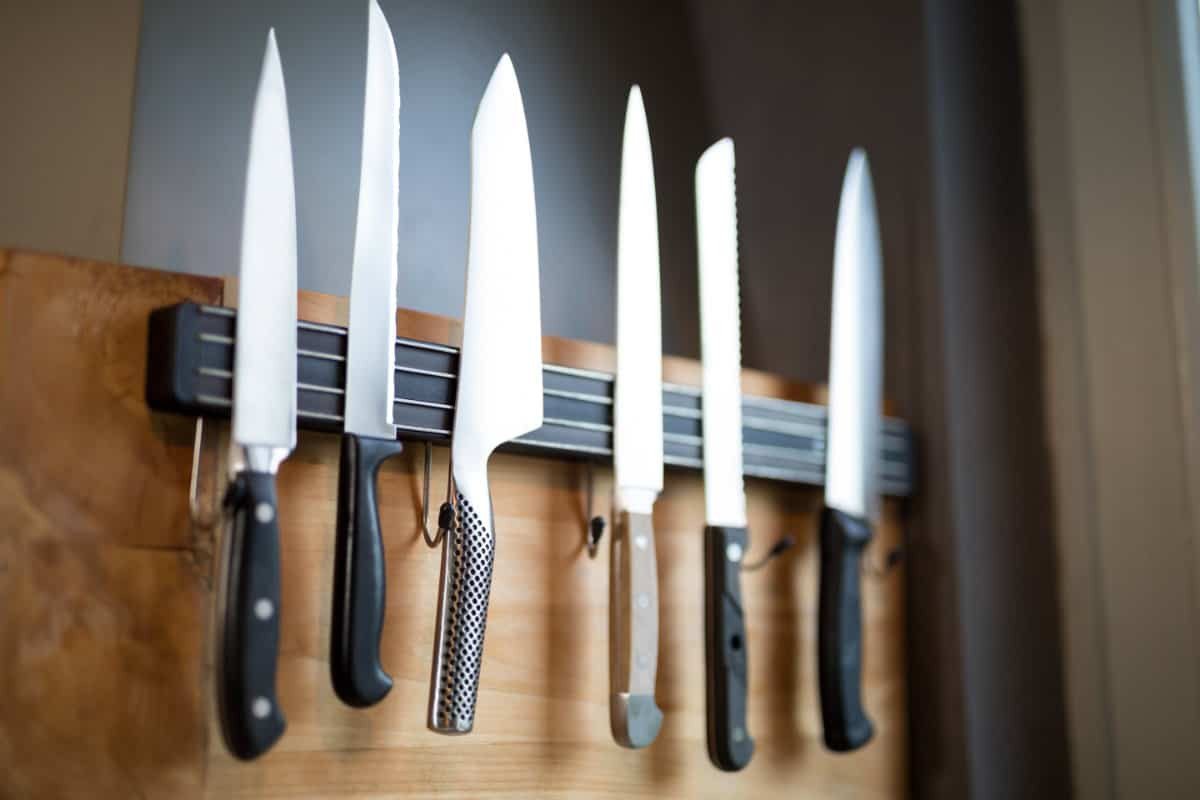
THE SHARPEST KNIFE IN THE DRAWER?
If knives are the tools of your trade, it makes sense to keep them well maintained and in good condition. Right? You service your car and you keep your heating equipment serviced, don’t you? You should also take care of your knives. Even for home chefs or mere knife lovers (there has to be a Latin name for that) maintaining a good quality knife is important for many reasons. Anyone who uses knives over an extended period knows the frustration of trying to use blunt, dull knives.
Keep them sharp, keep them clean, treat them with TLC. In this article, we’ll look at how to care for your blades and keep them sharp. We’ll also look at a knife sharpening service that might just save you a lot of time and effort.
Sharpening Knives: The Dos, Don’ts, Hows, and Whys
First of all, never store knives in a drawer or jumbled in with other tools. Apart from the fact that you will cut yourself while rummaging in the drawer, knives will not do well. All that clanging and banging against other metal implements ruins the edge on good knives. If you can, try to be the only one that uses your knives because everyone has a different cutting and honing style. Have a magnetic knife bar near your workstation and keep your knives where you can get at them easily.
Respect your knives
Whatever it is that you cut, sharp knives give the best result. The product will look better, your work will look better and your work will be easier when your knife is at its best.
Safety
I was told many years ago that a blunt knife is more dangerous than a sharp one. I didn’t understand why at first, but experience has shown me that it is true. If you are working with a blunt knife, you will put more pressure behind the cut. If the knife slips and your hands or fingers are in the way, you can do serious damage to yourself or anybody working near you.
Working with a sharp knife you will put just the right amount of pressure behind the cut and your work will be cleaner and you will be safer. You will also work faster because you will have the confidence in your knives.
Keep unused sharp knives out of the way of your work area. You will get lots of nicks from barely touching a sharp blade accidentally. If you drop a knife. Let it fall. Don’t attempt to catch a falling knife, ever. And if you are passing a knife to someone, never do so with the blade first! Pass it handle first or put it down on a flat surface and let that person pick it up for themselves.
Don’t attempt to catch a falling knife, ever!
Buy Quality
One piece of advice I was given while training was: Buy the best knives you can afford. This is still true. There are lots of cheap knives available and they are sharp for a few days. After that, you will be constantly trying to keep an edge and failing every time. So maybe you have saved a few dollars buying a cheap knife, but you will waste many more dollars trying to keep it sharp. Buy only quality knives!
Maintaining Your Knife
Never put your knives into a dishwasher. If the handles are made of wood, they will eventually loosen and fall off. The high temperatures and detergents in dishwashers will eventually ruin your knife and the high-pressure water jets will knock your knives against other cutlery ruining the edge. Wash your knives by hand using hot (not boiling) water and mild soap. Keep the blade facing away from you at all times.
Be careful and watch what you are doing at all times. I was washing a 12-inch knife on Christmas Eve after a very busy day when someone called me. I looked up to see what they wanted and took my eye off the knife. I spent six hours in the waiting room of the local hospital before being seen in the emergency room and went home with seven stitches in the palm of my hand.
A Christmas present to remember.
Honing
Contrary to popular belief, honing is not sharpening. Honing is re-centering the edge on the knife. As you can imagine, the fine edge of a knife is extremely thin. While you are using the blade there is going to be pressure on the edge from one side or another. The edge then becomes dull because it is not centred. This is where a honing steel comes into its own. Rubbing the blade on honing steel puts the edge back centrally so you can continue working.
There are a couple of methods of using a honing steel. The first way is with the honing steel held out in front of you and the knife is drawn down the steel towards you. The second is with the steel point on the table and where you draw the knife down towards the table. Method two is probably safer if you are a newbie, but either method works well.
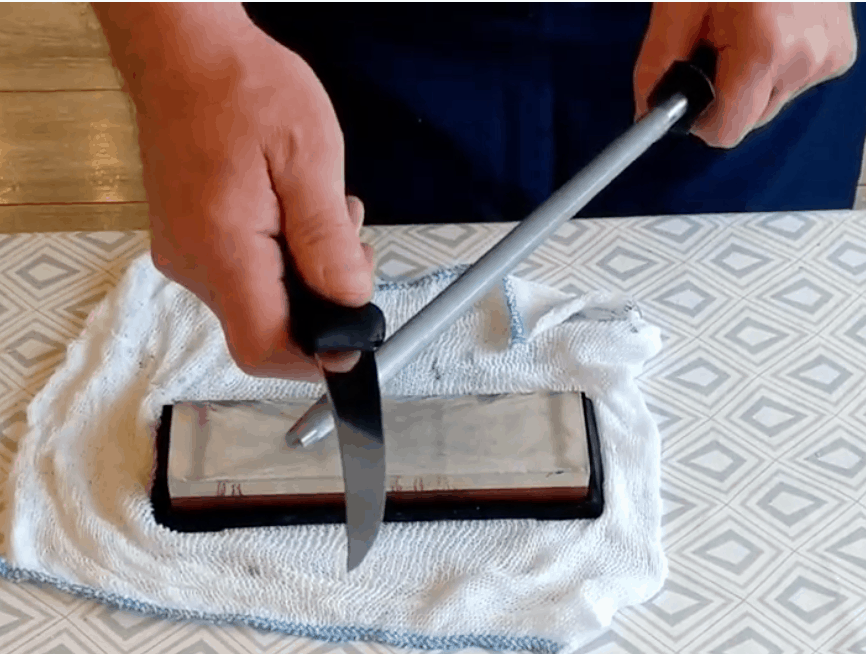
Getting the angle right
It is very important when honing a knife to get the angle right. Otherwise, you can make the blade even duller. Aim for an angle of between 10 and 20 degrees while honing to get the best results.
Different knives need different angles depending on the work they do the type of knife they are or the original factory edge that was put on them. Using Method 1, start with the heel of the knife at the top of the steel and draw downwards at the 10 to 20-degree angle. Then do the same with the other side. Put a little pressure against the metal to centre the edge. Do this half a dozen times each time.
With Method 2 start with the heel of the knife under the guard on the steel and draw downwards. Again repeat this half a dozen times. I recommending performing this task regularly while you work. Ideally, every few minutes when doing lots of cutting. When boning meat, the edge will deteriorate much more quickly than when slicing meat because the blade touches bone much of the time.
On the subject of honing, get a decent honing steel. As with knives, you can buy cheap steels, but you will simply waste your money. Buy the best you can afford.
Cutting surfaces
Don’t cut on a metal or marble worktop. This will absolutely ruin your edge in seconds. Wooden or nylon worktops are so much kinder. And never use your knife to cut paper, cardboard or plastic. That’s a sure way to ruin the blade. Have a box cutter nearby for those types of jobs.
Waterstone or oilstone?
The oilstone was the one I used first and where I learned to sharpen. It works well when using the 10 to 20-degree angle. Its main disadvantage is the oily mess it makes. I discovered the waterstone much later, and it is, in my opinion, a much better way to sharpen. It takes a little longer because you have to immerse the waterstone in water for 5 to 10 minutes before use. But I believe it gives a much better edge in the end.
Place the stone on a fairly damp cloth on a non-slip surface. Get your 10 to 20-degree angle right and run the knife away from you on the stone a half dozen times on the rougher surface. Do the same on the other side of the blade. Turn the stone over to the finer side and repeat the process. Run the knife on the honing steel a couple of times and you are good to go.
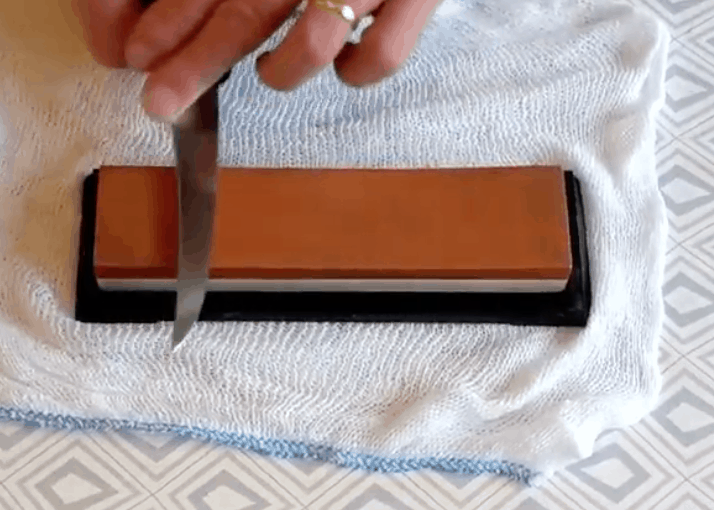
Knife Brands
I have used many brands over the years. F. Dick, Giesser, Swibo, Victorinox, Zwilling, Dexter-Russell and even Green River knives with wooden handles back in the day. But if I had to pick a favourite, it would be Victorinox. Followed closely by F. Dick.
In 2018, Team Ireland was given some lovely knives by F. Dick who was a sponsor of the World Butchers’ Challenge in Belfast. And as the winning team we were presented with the latest F. Dick knives in the “Ajax” Red Spirit range. I have a Victorinox 12 inch butcher knife that is 33 years old and still working.
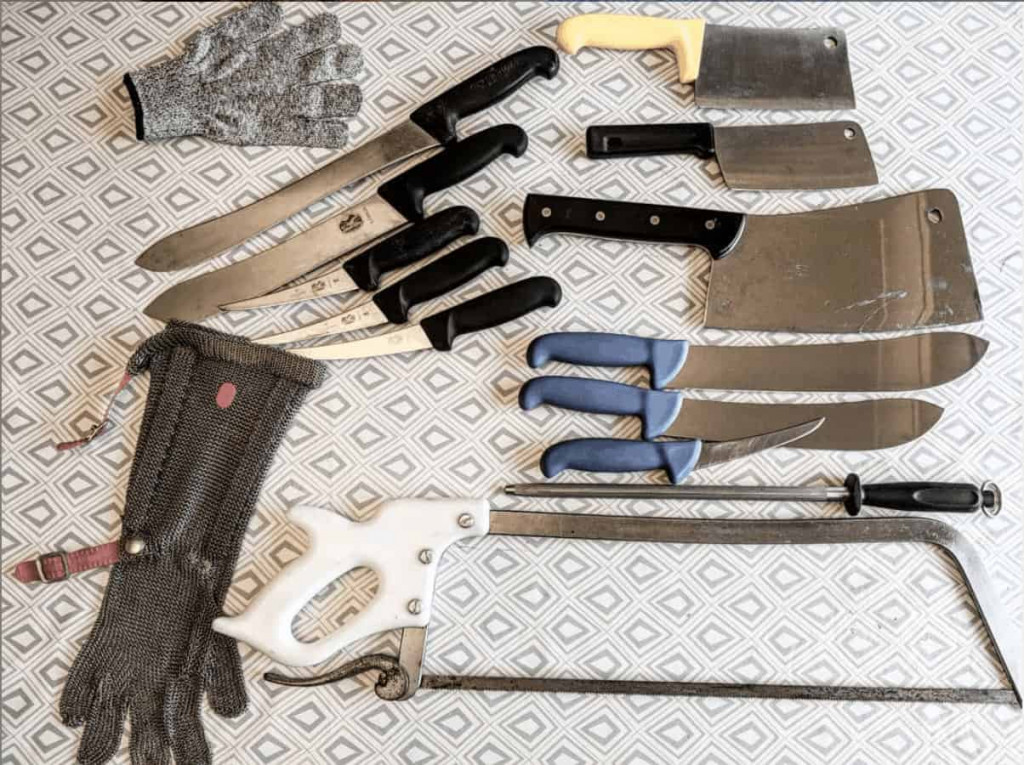
Comfort
When you consider that you may be using a knife for up to 10 hours a day, balance is very important. If the balance is off, your hands will ache and you will get fatigued sooner. Handle a blade for a few minutes before you buy it. That way you will see if it is comfortable.
Use knives for the purposes they were made. A boning knife to remove bone. A slicing knife if for slicing. And so on.
Your knife is not a screwdriver or a chisel so don’t use it as such. Have a knife for each purpose and you keep them all in good condition. This is true whether you are a professional, an amateur or an enthusiast.
Sharpen Your Knives Professionally
Sometimes it’s impractical to sharpen your knives yourself. I know many professional knife users who cannot get an edge on a knife. This is where you need help. Professional knife sharpening companies (either local or mail-in services) repair chipped or damaged blades. Chef and butcher knives, scissors, cleavers can all be sharpened. Each piece is done by hand allowing for the individual characteristics. This is important because the integrity of the steel is compromised if the blade is overheated during the sharpening process.
The angles on cutting tools are important and take into consideration the tasks they will be used for. An open razor will have a very small angle whereas a meat cleaver will have a large angle up to 30 degrees. The angle on a razor is perfect for removing wet hair from your face but if you struck it on something solid it would chip. A cleaver is designed for chopping hard bones so the angle is wider.
You may be an excellent chef, butcher or professional user, but you might need a professional sharpener to keep your blade in tip-top condition.
How often do knives need to be sharpened?
That, my friends, is a “piece of string” question. It depends on the type and frequency of the work the knife is being used for. Heavy use on boning meat will require more frequent sharpening whereas slicing soft fruit will need less frequent attention. Two or three times a year is the average, but your circumstances may be different.
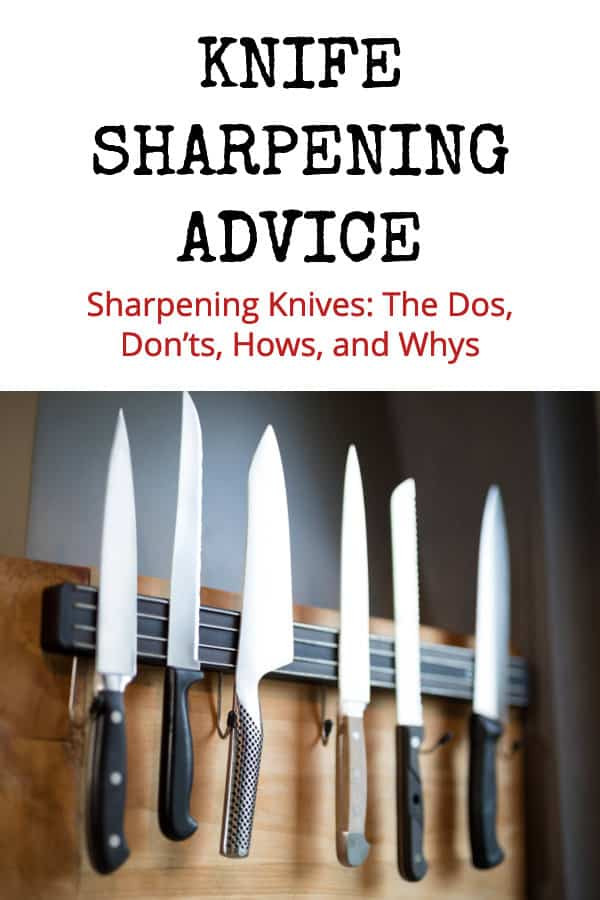
What a great article. Thank you so much.
My best knife is branded Le Creuset, a long thin ‘stilletoe’ but I have never sharpened it, as don’t want to wreck it. I will re-read this article and will work through all my knives and sharpen them all up, getting to the Le Creuset one last.
Thanks so much.
This is one of the best synopses of sharpening theory and practice I’ve ever come across. And I’m a woodworker.
I’ll add something that I do – it’s a quick way to get an edge back, I do it about once a week on my edge tools (less often on my kitchen knives)
I use automotive wet/dry sandpaper on a piece of glass or marble. A spray bottle to keep the surface wet, and the water also helps to hold the paper flat on the glass. A few swipes on the bevel and the back, a couple runs along a strop, and I’ve got a rejuvenated edge. This works well with Kitchen tools too, but it takes a little practice to hold the edge at the proper angle of the bevel on each side of the blade.
Great article. I still remember growing up on the farm and sharpening the knives for my parents as they butchered cows for the freezers. But gone are the days of a one grit stone and a soft steel knife that had to be sharpened often.
With some of the new modern harder steels out now, I have mostly switched over to diamond sharpening stones and it is amazing how fast the can bring back a razor sharp edge.
I have never had my knives professionally sharpened but I think that learning how to sharpen and maintain your knives at home is a great skill to learn. I recommend anyone reading this article give it a shot and practice with a cheaper knife until your can get it shaving sharp.
There is no feeling like a freshly sharpened knife gliding through your cut. And it is nice to be able to hit it with a quick strop or hone and bring it quickly back to a razor like cutting edge.
It never crossed my mind that chef knives could be harmed if tossed in with the utensils. My mom bought some good kitchen knives that need to be sharpened. I will call a professional and let her know to clean her knives separately from her silverware.
I’m glad that you mentioned that a water stone would make less of a mess. I am interested in getting some nice knives, and I would want to keep them sharp, but I also would prefer to not make a mess while doing so. I’ll have to get a water stone to help sharpen them if I decide to get the knives.
Great advice here, thanks for posting!